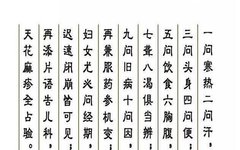Translation of Huangdi Neijing: Ling Shu Chapter 75
Huangdi said: Well spoken. Huangdi continued: The method of needling as mentioned in the chapter on “Jie Jie” refers to the needling of the six fu organs’ collateral channels, which do not have fixed locations. Please explain this in detail. Qibo replied: This condition arises from an excess of Yang Qi and a deficiency of … Read more










